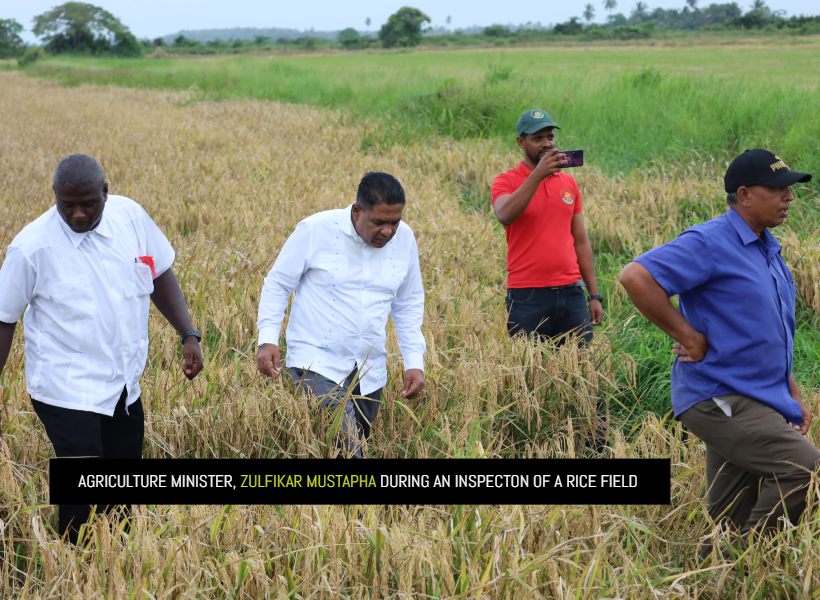In the last two years, rice farmers were adversely affected by severe flooding, resulting in shortened opportunities for sowing and harvesting. Despite such challenging circumstances, the collaborative efforts between farmers and the government through the Ministry of Agriculture’s Guyana Rice Development Board (GRDB) have seen the national yield for the second crop of 2022 averaging over six tonnes per hectare.
This is according to Agriculture Minister, Zulfikar Mustapha. During his weekly sector update programme, the minister revealed that the improvements were a result of farmers applying the correct agronomic practices as well as the government’s intervention to ensure farmers had the necessary support throughout the production cycle.
The minister said, “Over the last two years, the weather conditions were very unfavourable. Although we’ve experienced this and what the pandemic has done with other input costs associated with rice production, we persevered, achieving higher production figures and yields than we did last year. When you compare 2021 production figures to that of 2022, because we are indeed harvesting the last crop of 2022, we’ve surpassed those levels. If we didn’t have the issues we had, we would’ve had a bumper crop,”
“With the crop that we are currently reaping, we’ve seen that yields have increased tremendously, to over six tonnes per hectare. That shows a marked improvement where the weather condition is concerned. So far, we’ve had favourable weather conditions for reaping and generally for the entire crop. I am hoping that for the second crop of 2023, we’ll have a bumper crop; a record-breaking production,” he noted.
While acknowledging that input costs continue to pose challenges to farmers, Minister Mustapha said the government has been working to lower the cost of production, improve yields, and offer support to farmers across the country.
Minister Mustapha said too that a joint team consisting of scientists from the Guyana Rice Development Board and GRMEA (Guyana Rice Millers and Exporters Association) has traveled to Brazil to gain technical knowledge on how Guyana’s seed-producing facility and production can be enhanced in order to have higher-yielding seeds.
With this, he added, the national average can be moved from over six tonnes to close to eight to ten tonnes per hectare.











